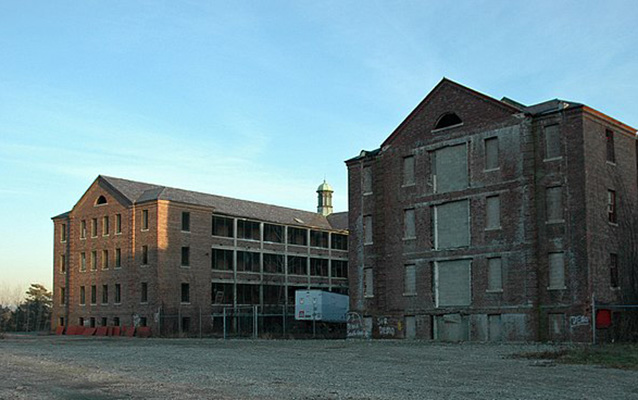Last updated: September 7, 2017
Place
Northampton State Hospital

Northampton State Hospital was established in 1855 as the Lunatic Hospital at Northampton. It was the Commonwealth of Massachusetts’ third insane asylum following Worcester (1833; demolished) and Taunton (1851). Like Taunton, it was organized on the congregate model, and architect Jonathan Preston of Boston designed an "Elizabethan"-style structure that followed the highly centralized plan for 250 patients espoused by Dr. Thomas Kirkbride of the Institute of the Pennsylvania Hospital. Its hilltop site and landscaped grounds are especially evocative of Kirkbride's influential ideas. Together, the buildings, siting, and landscape of the Northampton State Hospital provide one of the system's clearest reflection of early treatment programs for people with disabilities, which depended on the creation of an ideal physical and moral environment to effect cures.
The early history of Northampton State Hospital is of particular interest due to its associations with Pliny Earle, a nationally recognized authority and prolific writer on the subject of insanity. While serving as Northampton's superintendent from 1864 to 1886, Earle wrote extensively on such subjects as "The Prevention of Insanity," and "The Curability of Insanity," which refuted early optimistic claims of cures and which were partially based on his observations at Northampton. It achieved additional significance in the 1920s and 1930s when Federal relief funds were provided to relieve overcrowded conditions and confirming Northampton's role as the western regional center for mental health services. Northampton's history clearly reflects development of the Massachusetts State Hospital and School System, with its period of significance ranging from 1855 to 1940.
Image Source
National Register Nomination
